Have a bunch of curtainless windows in your home? Or maybe you stuck with drapery that had already been installed when you moved in because it seemed easier than trying to change them? You’re not alone. Given all the factors involved, upping your window dressing can seem overwhelming. But never fear—this post is for anyone who has coveted curtains but has never known where to start. The Brownstone Boys are here to help you go from “curtain confused” to “curtain confident!”
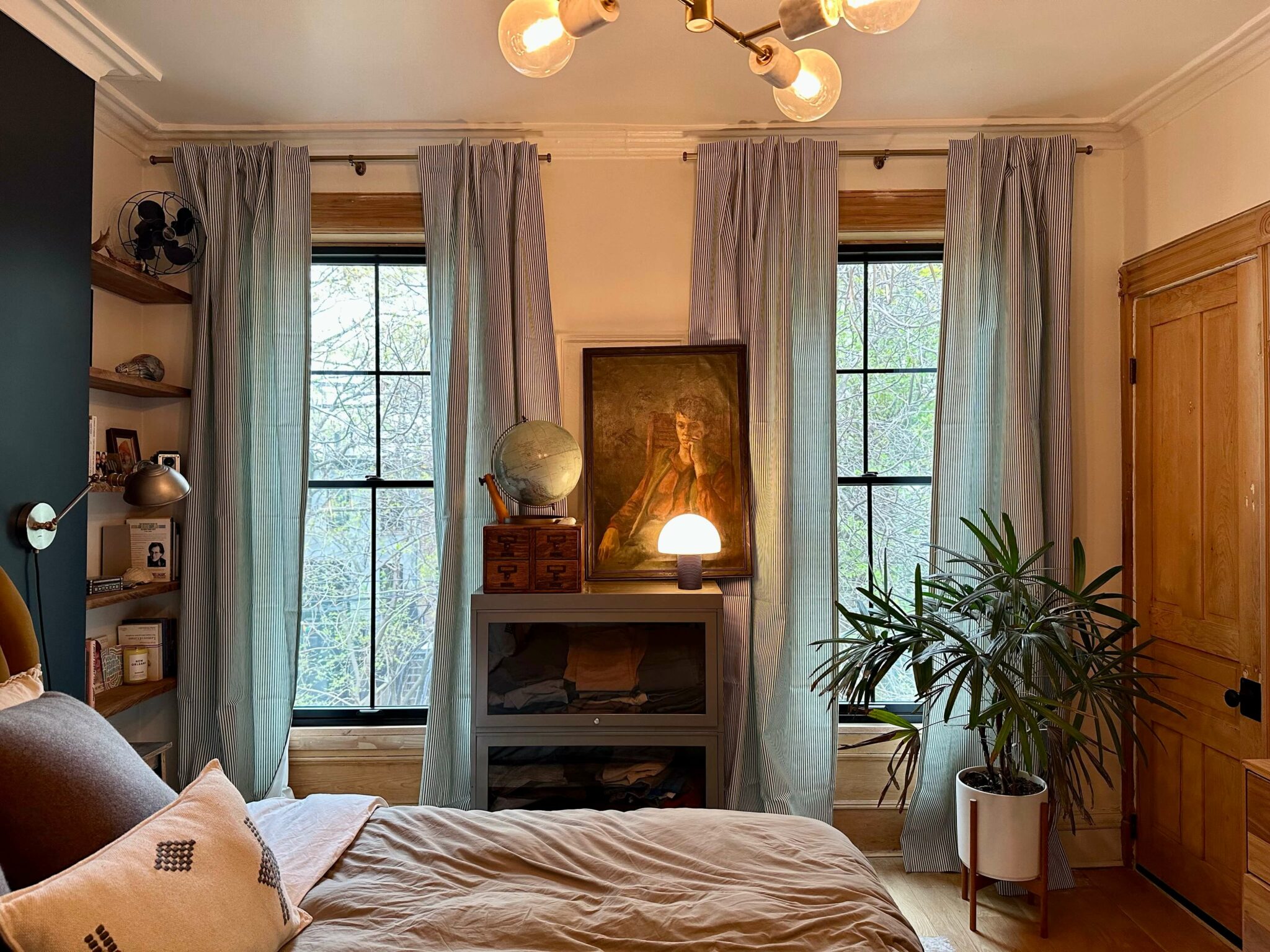
The Brownstone Boys: Hanging curtains is one of those interior design jobs that can get complicated fast, given all the aspects of the project at hand. Do I hang them at the top of the window, or up to the ceiling above? How much space should I leave on either side? How long should they be? All questions that are sure to come up as soon as you actually pick up the curtains and rod and bring them to the window. As much as we’d like to say there’s one clear answer that applies to every window and curtain, it’ll depend on the type of window, the type of curtain and the style of room you’re going for. Luckily here are some ground rules you can use to determine the best way to go about it.
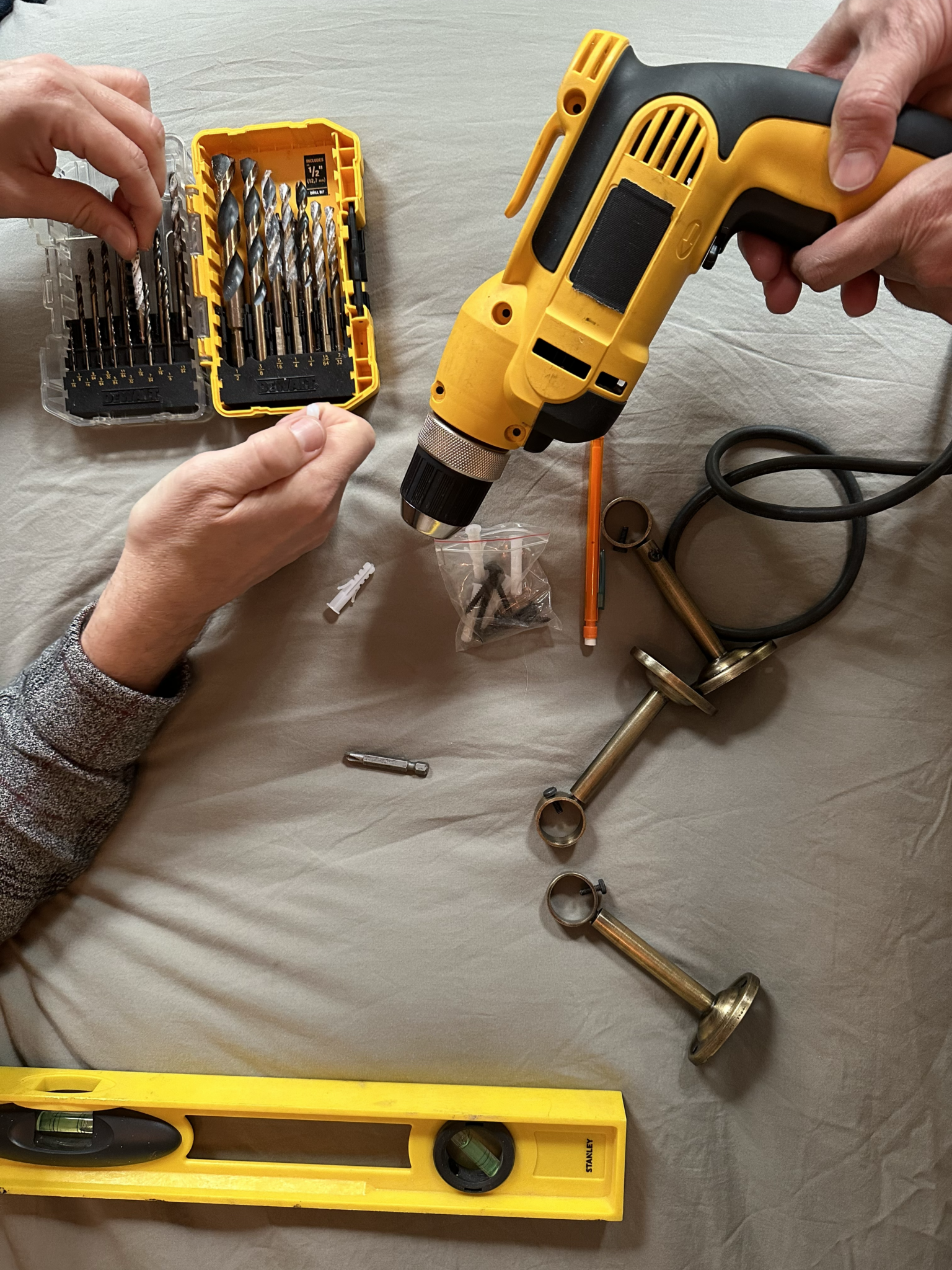
Tools You’ll Need to Install Your Curtains
While the tips below walk you through where to hang your curtains and what types of curtains to order, these are the tools you’ll need to get the job done.
- Measuring tape
- Curtains (We chose Provincial Stripes – Antique Blue curtains in Cypress Cotton Canvas by kristopher_k)
- Curtain rods
- Installation hardware
- Pencil (for marking where to install the curtain rods)
- Level (to ensure your curtains are hung evenly)
- Drill
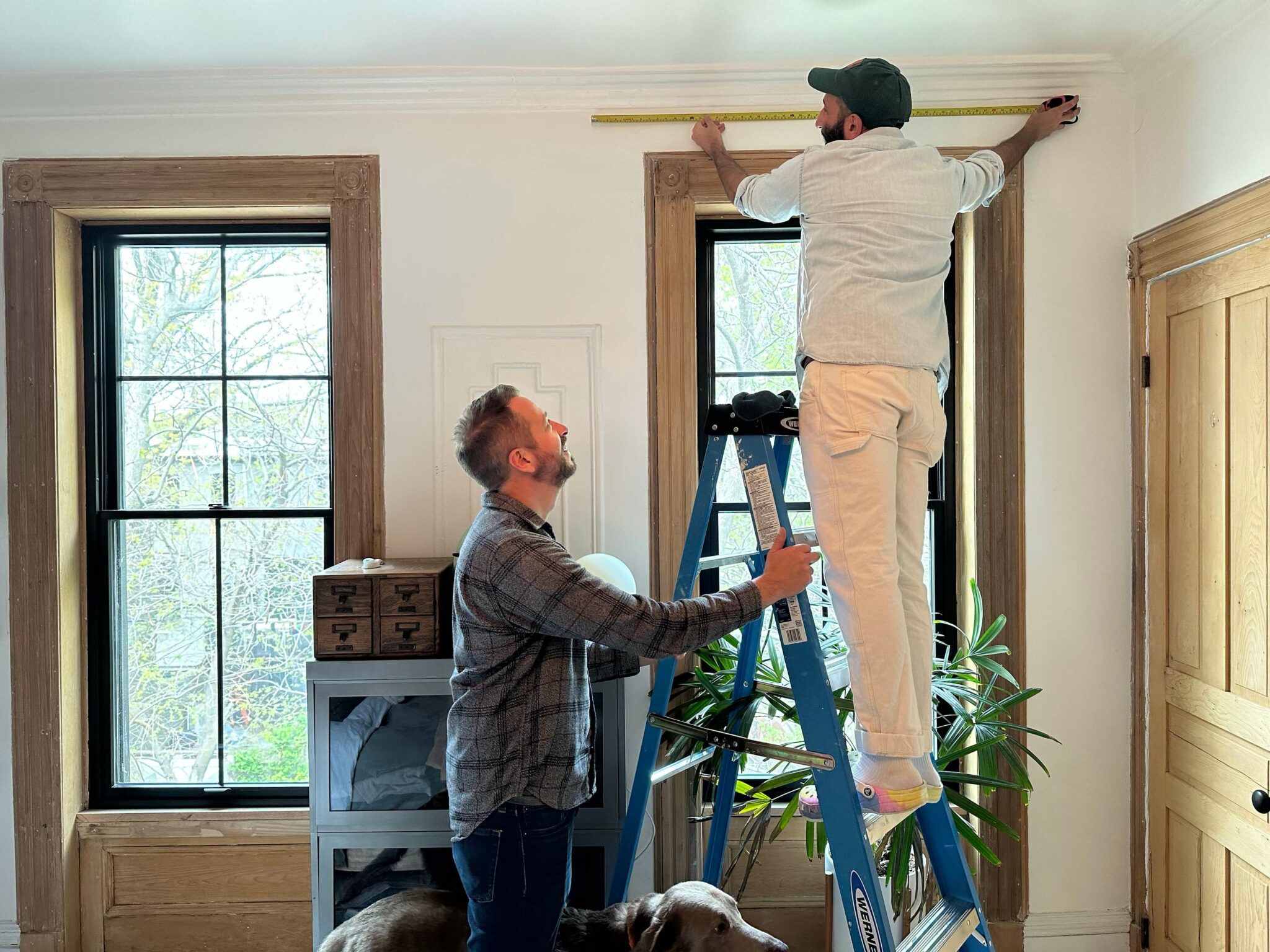
1. Measure and assess your space.
The first steps are to measure and assess the window as well as the room it’s in. Asking yourself these questions and noting your answers will make the rest of the process so much easier! Once you have your answers, you’ll be able to use them to determine what size curtain panels you’ll need, how many panels to buy and where you should hang them.
• How wide and tall is your window?
• How close to the ceiling is your window?
• Is there crown molding on the ceiling?
• Is there a wall, door or another window close to this one?
• What sort of style does your room have already, or what style do you envision for it with this project?
Standard curtain lengths are usually 84”, 96” and 108.” While it may vary, the width of many curtain panels is generally somewhere around 50” when fully stretched out. Next up, we’ll figure out where to hang our curtains, and then move on to how many curtains you’ll need based on the measurements you learned in this section.
Spoonflower curtain details
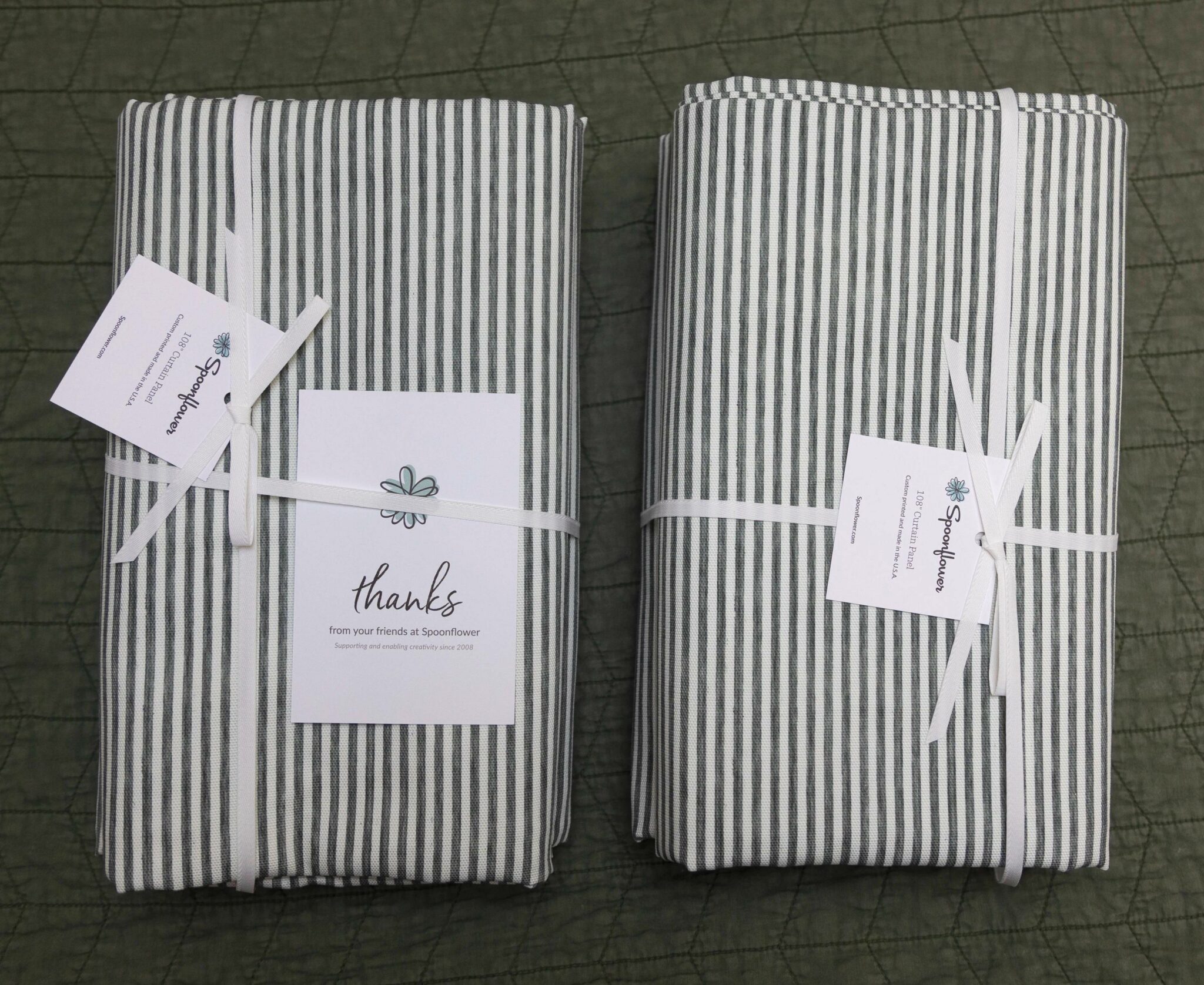
2. Figure out the height you’ll hang your curtains.
Let’s start with how high you’ll want to hang your curtains. Most windows will look best when the curtains go up to the ceiling on either side, as hanging the curtains right at the top of the window can make it look shorter and even make your ceiling height look lower. That being said, remember that there are certain situations where this isn’t possible, or where another option might look better—these are general guidelines, you know your place best!
If your space has crown molding, you’ll need to hang your curtains just below the molding. Additionally, if your ceiling happens to be exceptionally high, and the top of your window doesn’t come anywhere close to the ceiling, that’s also a good reason to bring your curtains down to just above the window. In some cases, where windows are recessed into thicker walls, or where there’s ornate window molding you don’t want to cover, it may be best to mount your curtains within the window frame.
With the above guidance in mind, think about how high you’ll want to hang your curtains. You may want to play around with a few different options and see what you prefer. Once you know the height you’d like to hang them up top, measure that distance and write down (or draw a sketch!) of what you discovered so that you’re not second guessing yourself once you order your curtains.
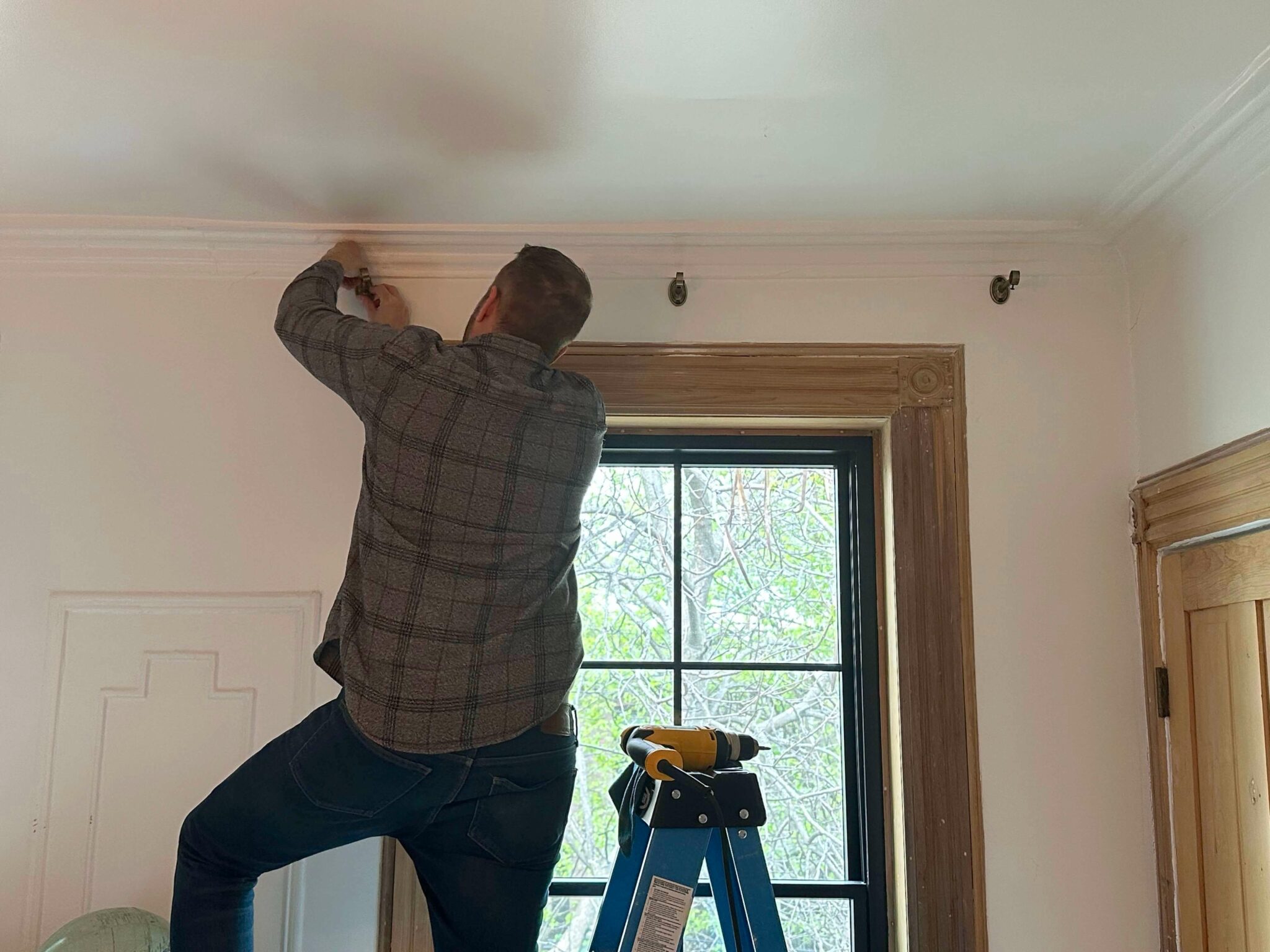
3. Figure out the width of your curtains.
Let’s tackle the width of your new curtains!
How wide should you go?
A good rule of thumb for the width of each curtain panel is for it to be at least 1.5 times the width of the entire window. While this means that one curtain panel can cover your entire window, using this guideline means that when you close your curtains they will remain pleated and full and aren’t pulled tight and flat.
If you would like your curtains to seem even fuller or if they are made from a thin material, you can go up to 3 times the width. Please note that this may mean getting multiple panels for each window side depending on the width of your window.
A good rule of thumb for the width of each curtain panel is for it to be at least 1.5 times the width of the entire window.
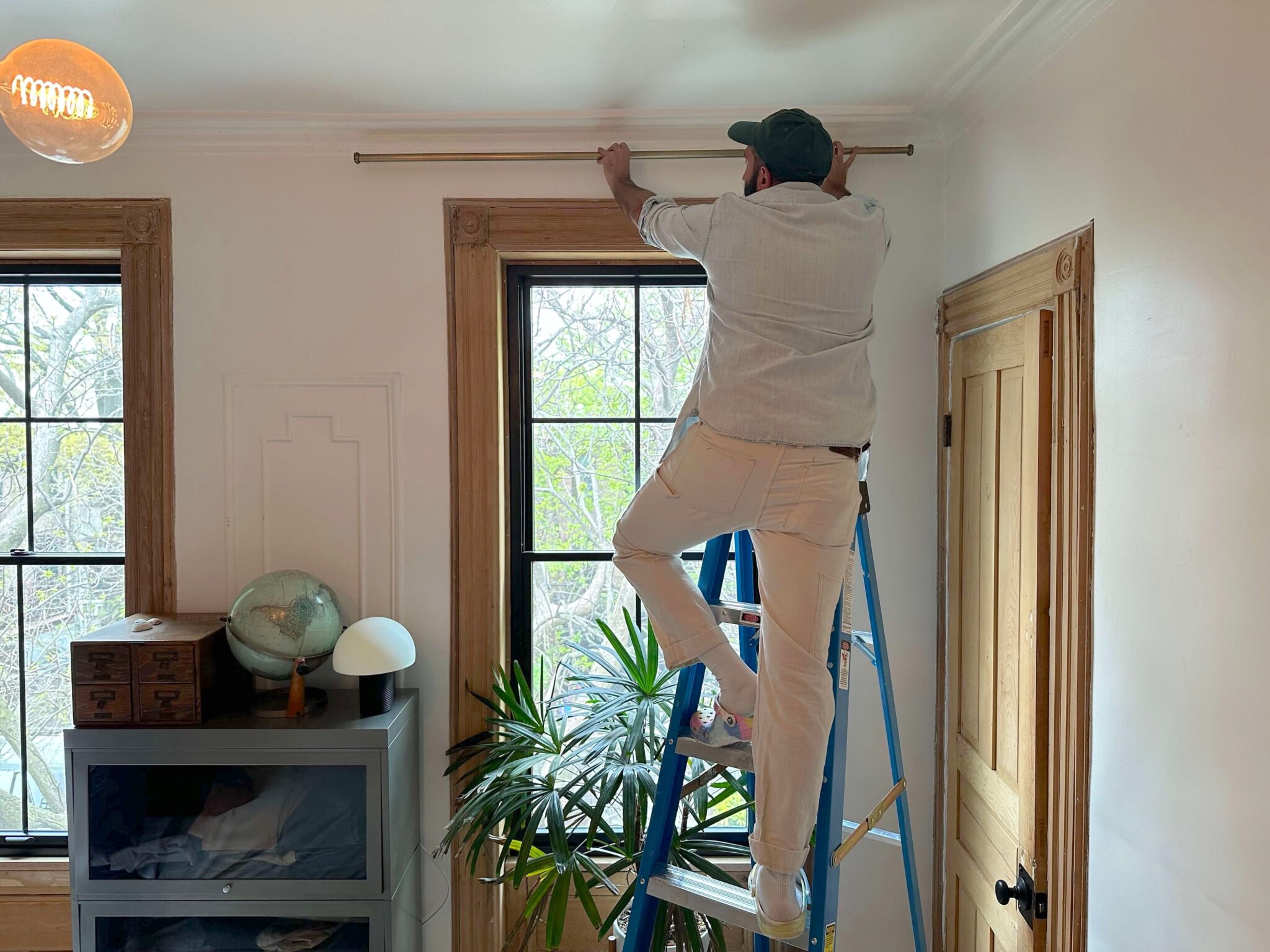
What your curtains should cover:
In terms of width, generally speaking, curtains should cover the window trim on either side of the window. To ensure your curtains stay in place once they’re installed, having at least one ring (or loop or grommet, depending on the curtain type) on the outer side of the bracket ensures that your curtains fully close vs. having the sides pull in toward the center of the window instead.
A note about installation hardware:
When thinking about where to install the brackets for your curtains, remember that your curtain rods may extend past the brackets. Therefore, think in terms of where you want the rods to go, then work backward from there with where to place the brackets. Now that you know where you’ll be hanging your curtains and how many panels you’ll need, let’s look at what different curtain hanging methods are out there.
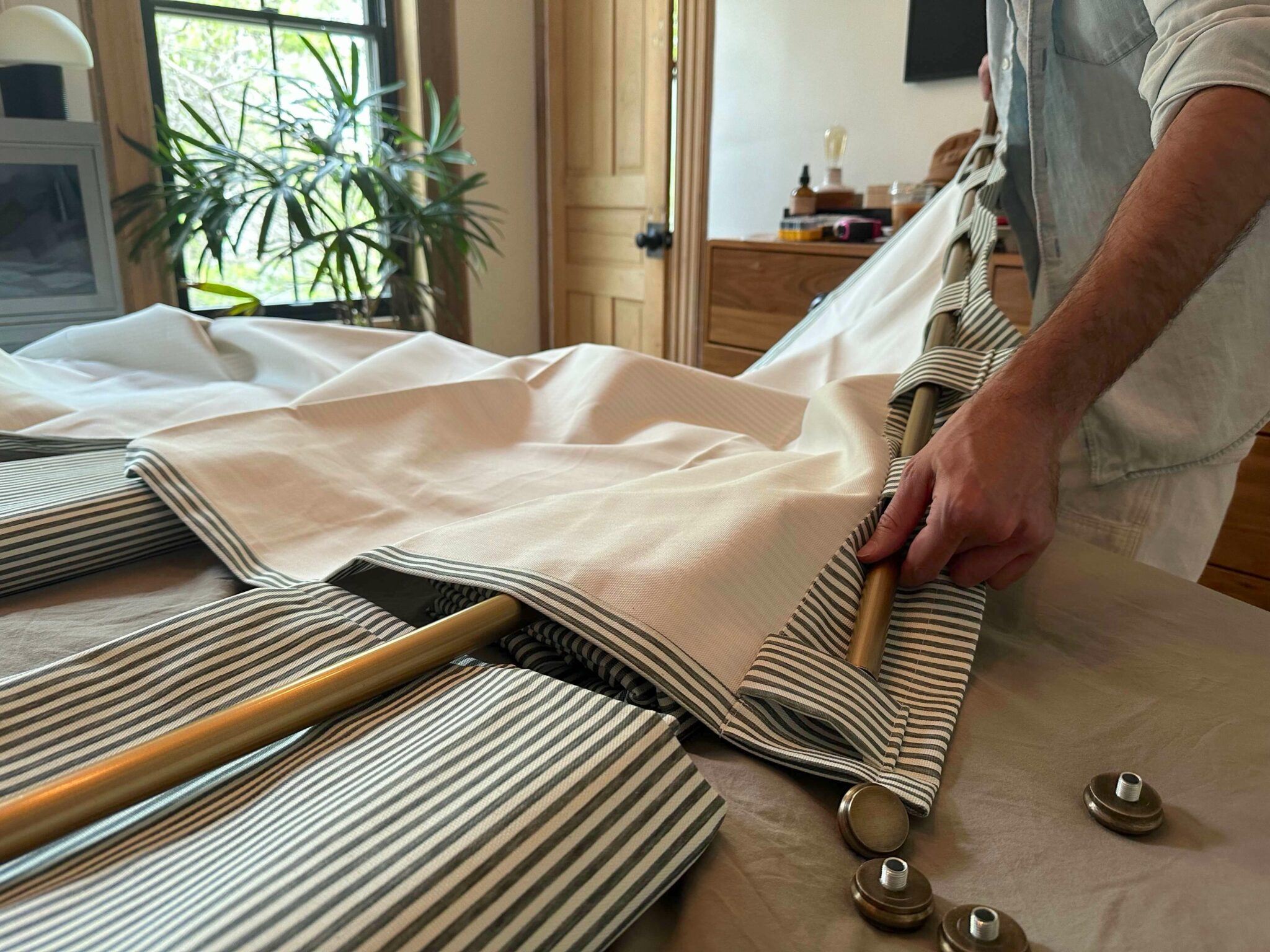
4. Choose your hanging method.
Once you’ve decided where your curtains should go, it’s time to evaluate the curtains themselves—and a great place to start is with the mounting method. There are various ways curtains can be attached to their rods, but the most common are rod pockets, loops or tabs, hooks and grommets. (Note: Spoonflower’s curtains are hand-sewn with both rod pockets and top-tabs.)
Rod Pockets
Rod pockets are where the top of the curtain is folded over and sewn with openings on either side, where the whole curtain is simply slipped into the rod directly. This is the easiest way to mount curtains! With this hanging method, the curtain fabric can (in some cases) stay fairly wide at the top. When the curtains are opened, they scrunch up on the curtain rod and leave rod brackets exposed. If this exposure isn’t desired, you can place the curtain rod behind a valence.
Loops or Tabs
Next are loops (or tabs): fabric loops that have been sewn onto the back of each curtain panel. For installation, the curtain rod can be easily slipped through the fabric loops. With this hanging method, your curtains can be opened wider than those with a rod pocket. Additionally, one or two fabric loops can be placed to the outside of the rod bracket so that it’s concealed and all the fabric loops aren’t pulled in with the rest of the curtain when it’s closed. Compared to other hanging methods, these fabric loops can be a bit harder to pull back and forth and if you have an extendable rod with a seam in it, the loops are more likely to catch on the seam than they are on rods without a seam.
Grommets
Grommeted curtains have large holes punched in the top of the curtain with metal grommets surrounding them. For installation, the grommets are slipped through the rod. This hanging method has all the benefits of the loop curtain, and the metal grommets make the curtain easier to pull back and forth. Do keep in mind that grommets give your curtains a specific look that may not work in every space, and due to the way the curtain goes on the rod, you’ll be able to see the rod between every other pleat.
Hooks
Hooks allow you to attach the curtain to rings. This is the most expensive and time consuming hanging method and means that the curtains have had hook loops sewn into the back of them. Usually the loops sewn onto these curtains are constructed so that the hooks can be mounted at different heights, allowing you the choice of rings that are either exposed or mounted so that the top of the curtains extends over the rings and hides them. These hooks can also be inserted in a way that creates permanent pleats, which stay in place even when the curtain is pulled closed for a more formal look. Since the hooks attach to the rings this makes them very easy to pull back and forth.
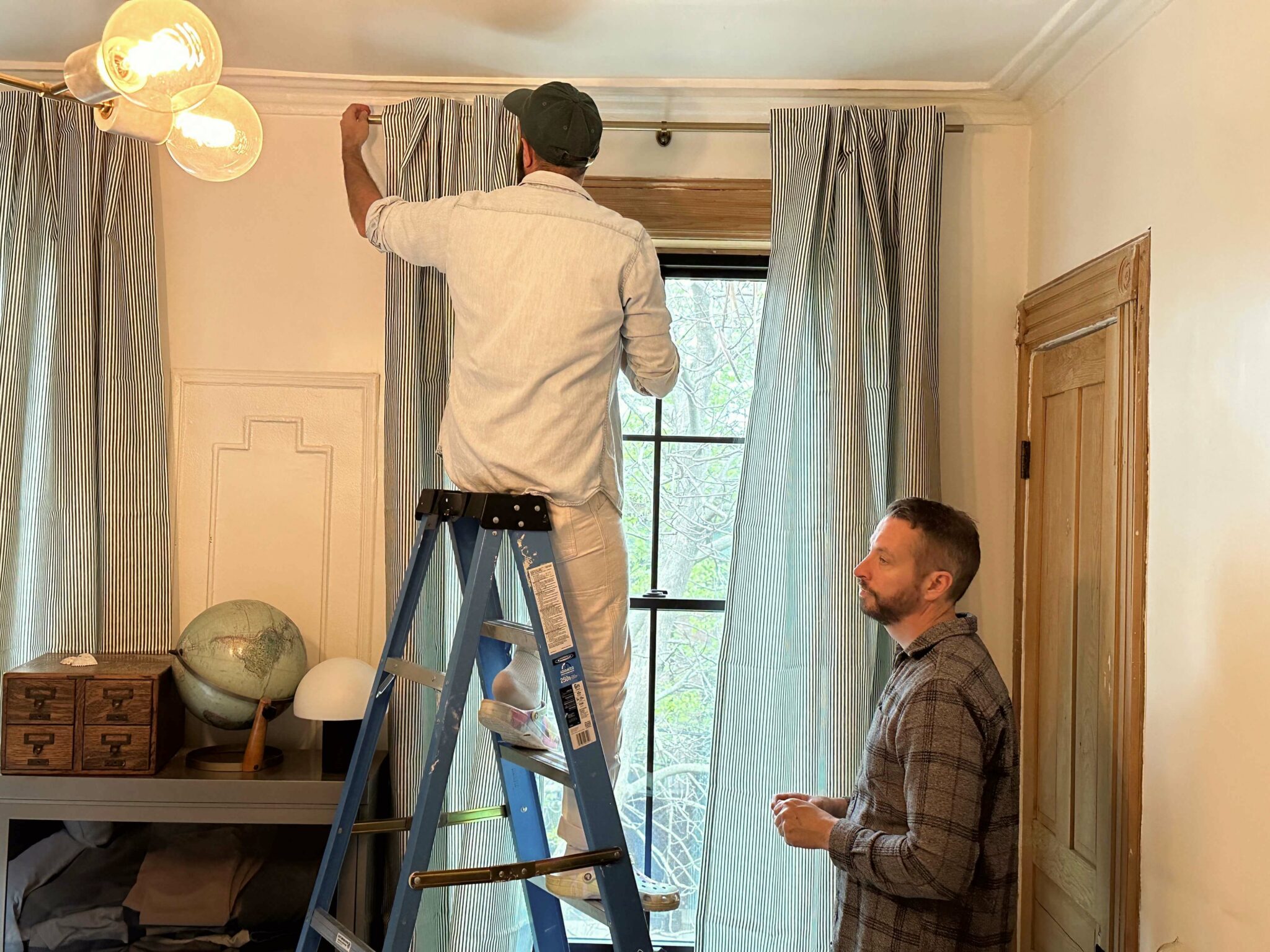
5. Other helpful things to keep in mind.
With the sections above, you’ve determined the height and width of your curtains and how you’d like to hang them, but here are a few more things to keep in mind before you hang your new curtains.
Layers
One layer or two? While a single layer of curtains can work perfectly, in some cases you may want to add an additional sheer layer underneath. This additional layer can work to give you a bit more privacy, filter sunlight in bright rooms or add a bit of drama to your space. If you decide to add a sheer layer, you’ll need to make sure you get a double rod so that the sheer layer can be opened and closed independently of the curtains.
Curtain Style Tips for Modern Spaces
If you’re going for a more modern look, the curtains should come down right to the level of the floor so that they’re almost touching, but not quite, and the pleating should be more relaxed. They should hang straight down without any tiebacks. If this is the look you’re going for, you may need to adjust your curtain’s height measurements accordingly.
Curtain Style Tips for Traditional Spaces
If you’d like a more traditional look, you can have the curtains pool on the floor, though make sure they’re not too long so they don’t start to pile up. The pleats should be more uniform, even creating permanent pleats with mounting hooks. You can also have the curtains stay stationary on the rod in the fully closed position, and pull back the curtains lower down, keeping them open and swagged with a tie back for a more formal traditional look. Again, if this is the look you’re going for, you may need to adjust your curtain’s height measurements accordingly.
While these hanging tips will work in most cases, remember that they’re just guidelines! What’s most important in your home decor is that you’re doing what feels best for your unique situation, personality and space. Because after all, at the end of the day, if you’re happy with the way it looks then you’ve already done it right.
Frequently Asked Questions
x 108”. (In centimeters, that’s 127 cm x 213.36 cm, 127 cm x 243.84 cm and 127 cm x 274.32 cm.) We offer two curtains in two different fabrics, Cypress Cotton Canvas or Linen Cotton Canvas, and two different hanging styles, rod pocket and tab-top.)
Ready for More Interior Design Tips?
The post How to Hang Curtains With Confidence appeared first on Spoonflower Blog.
